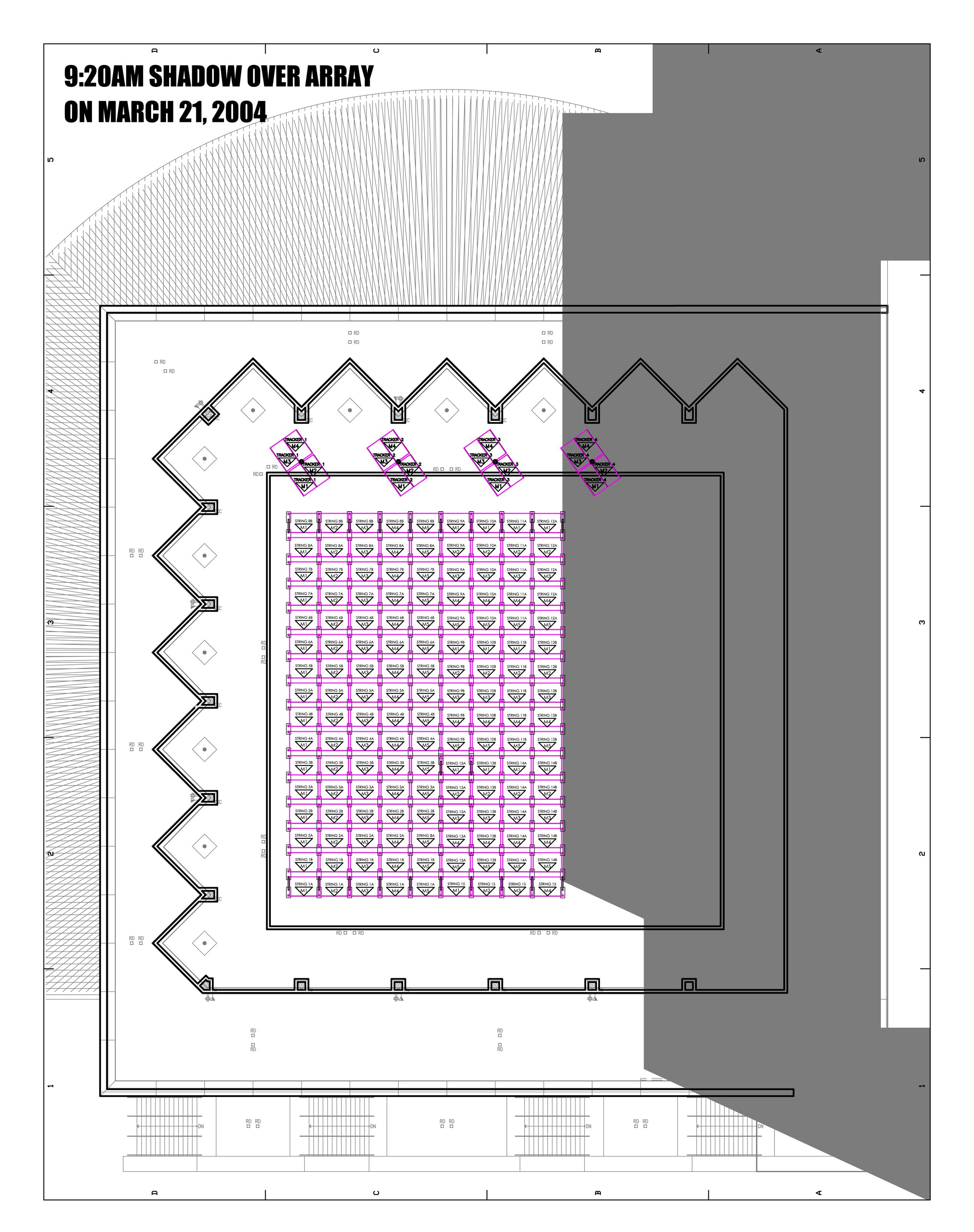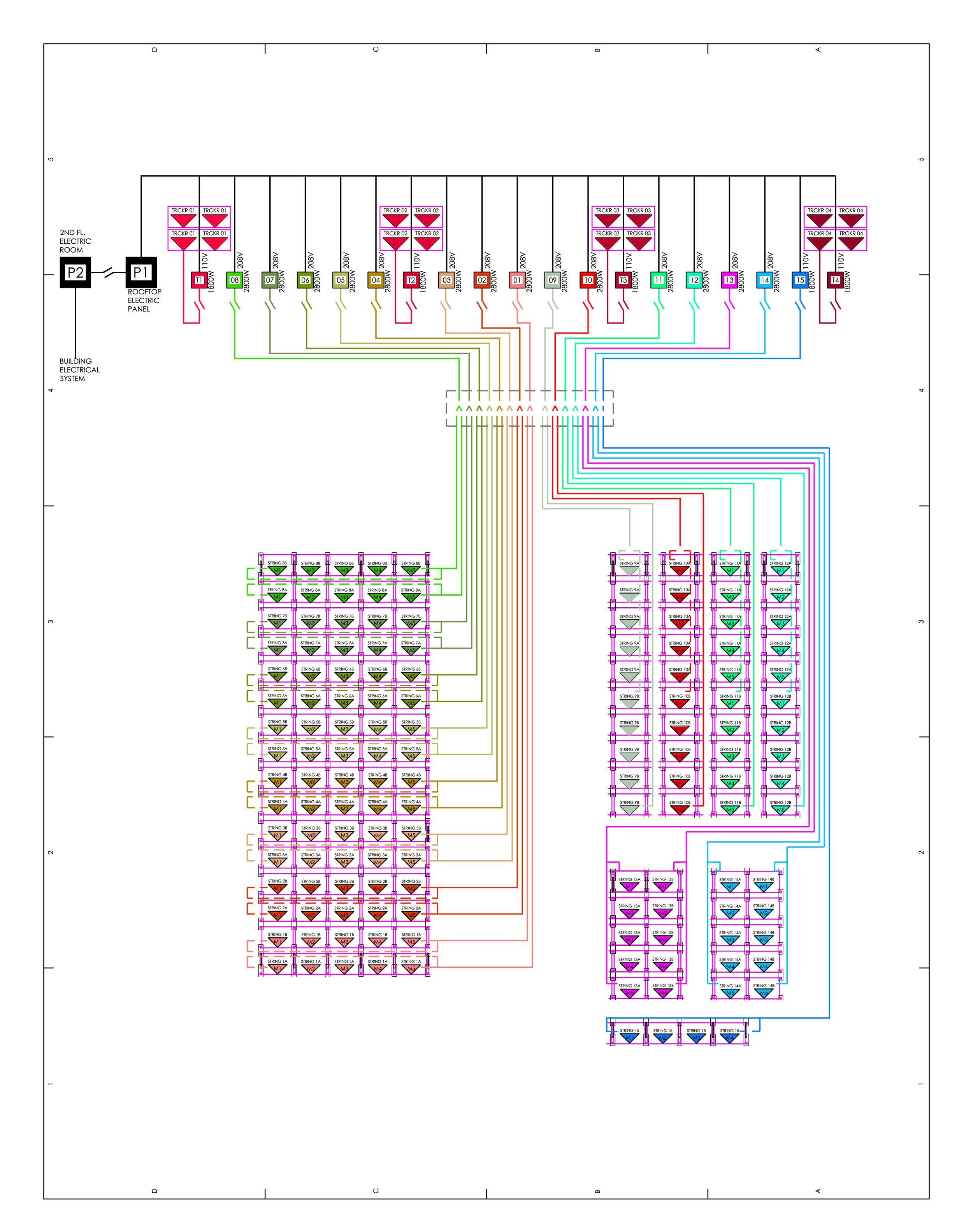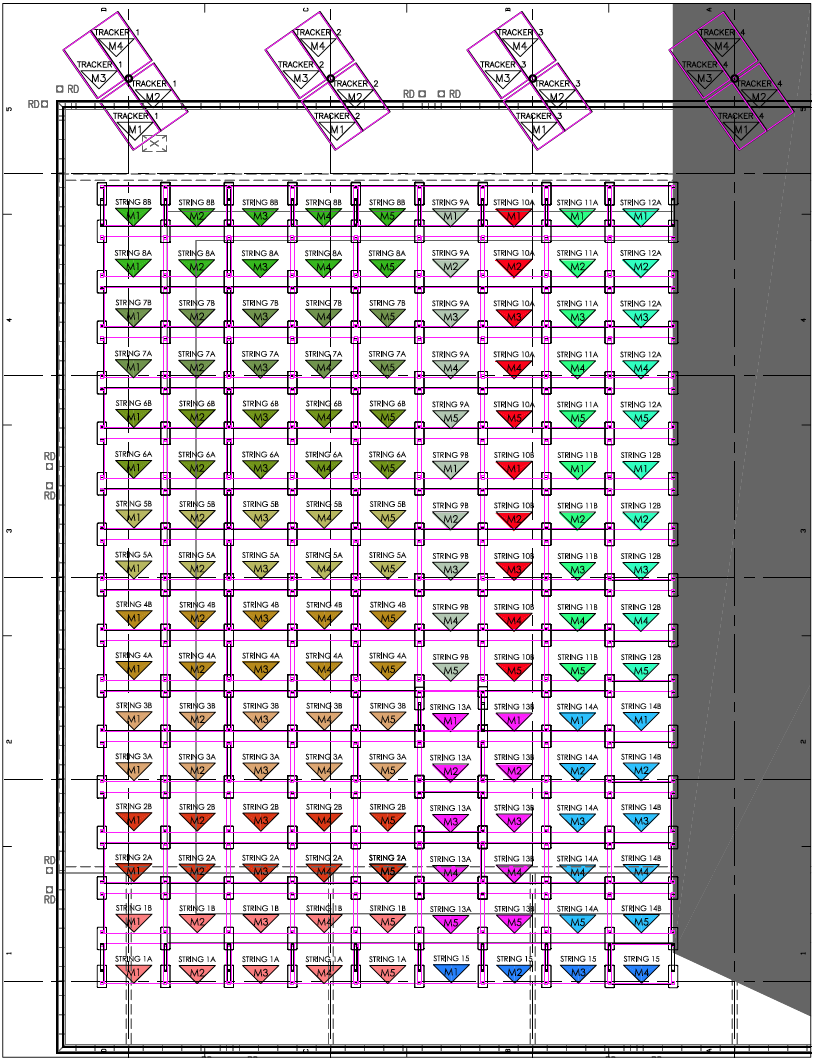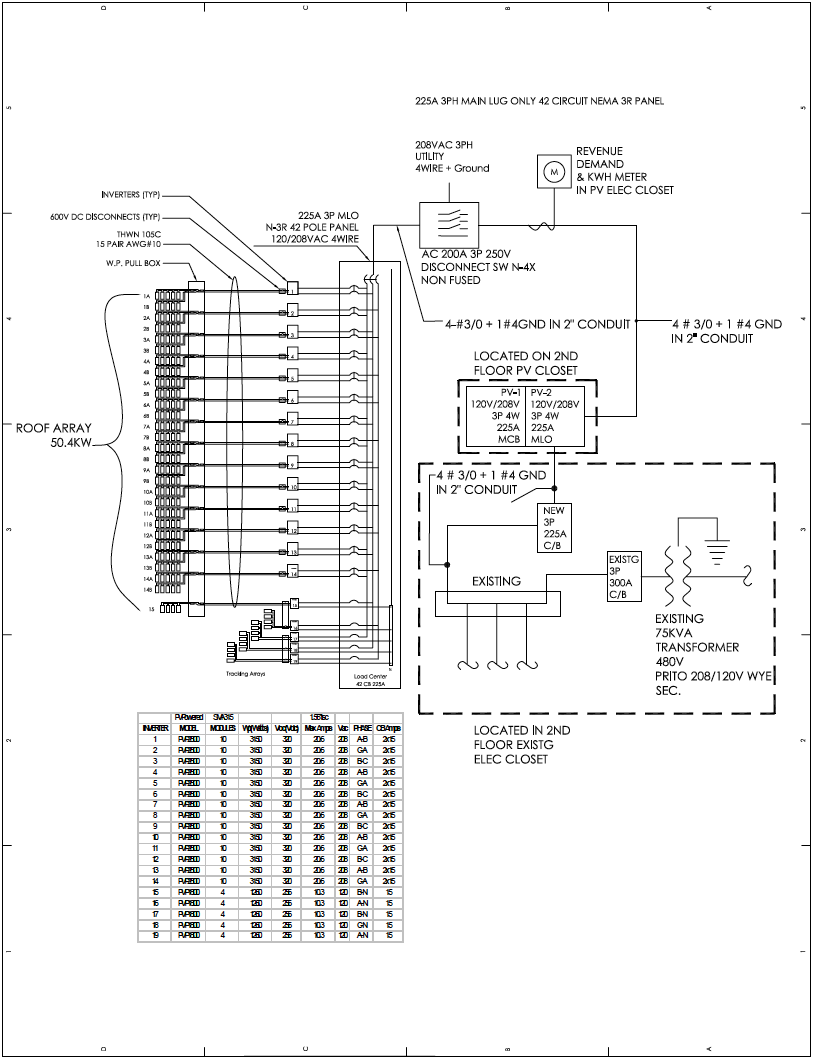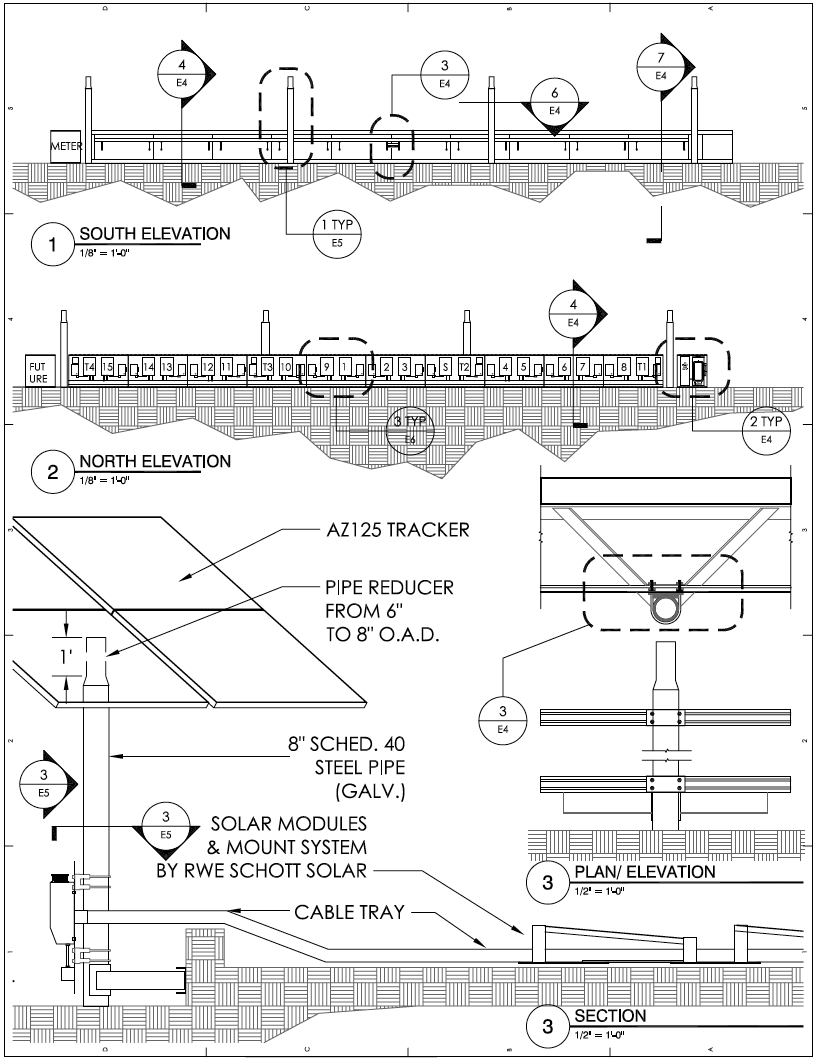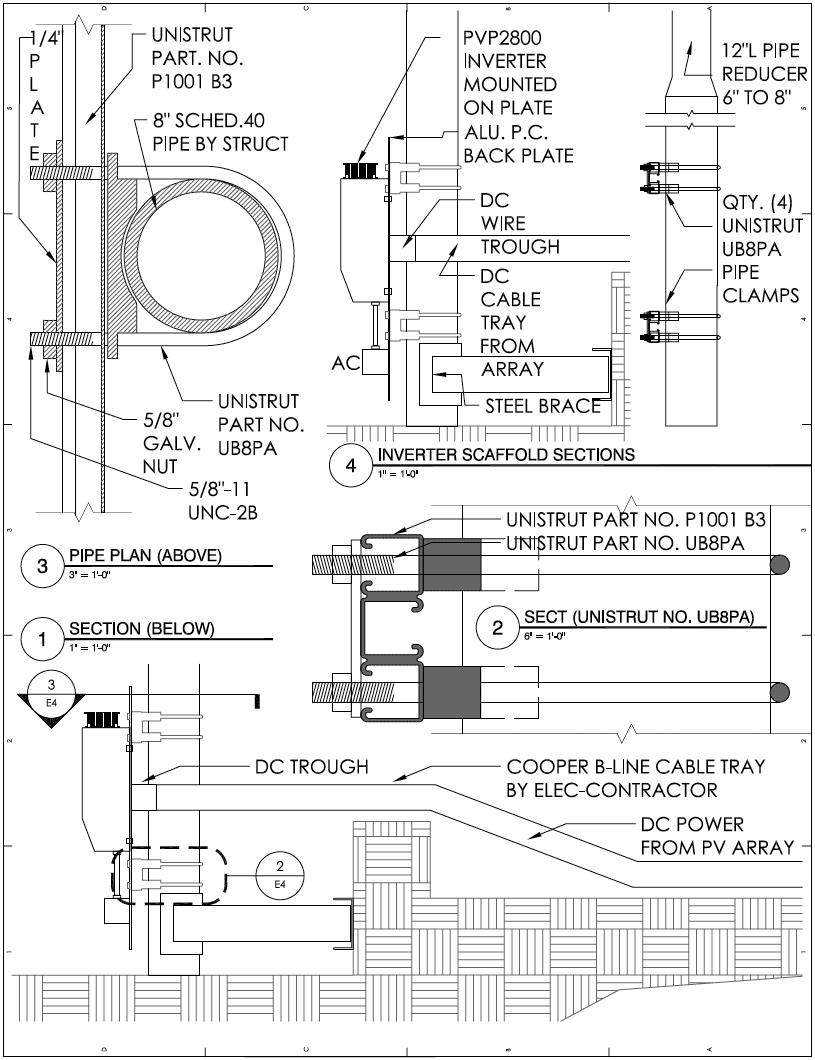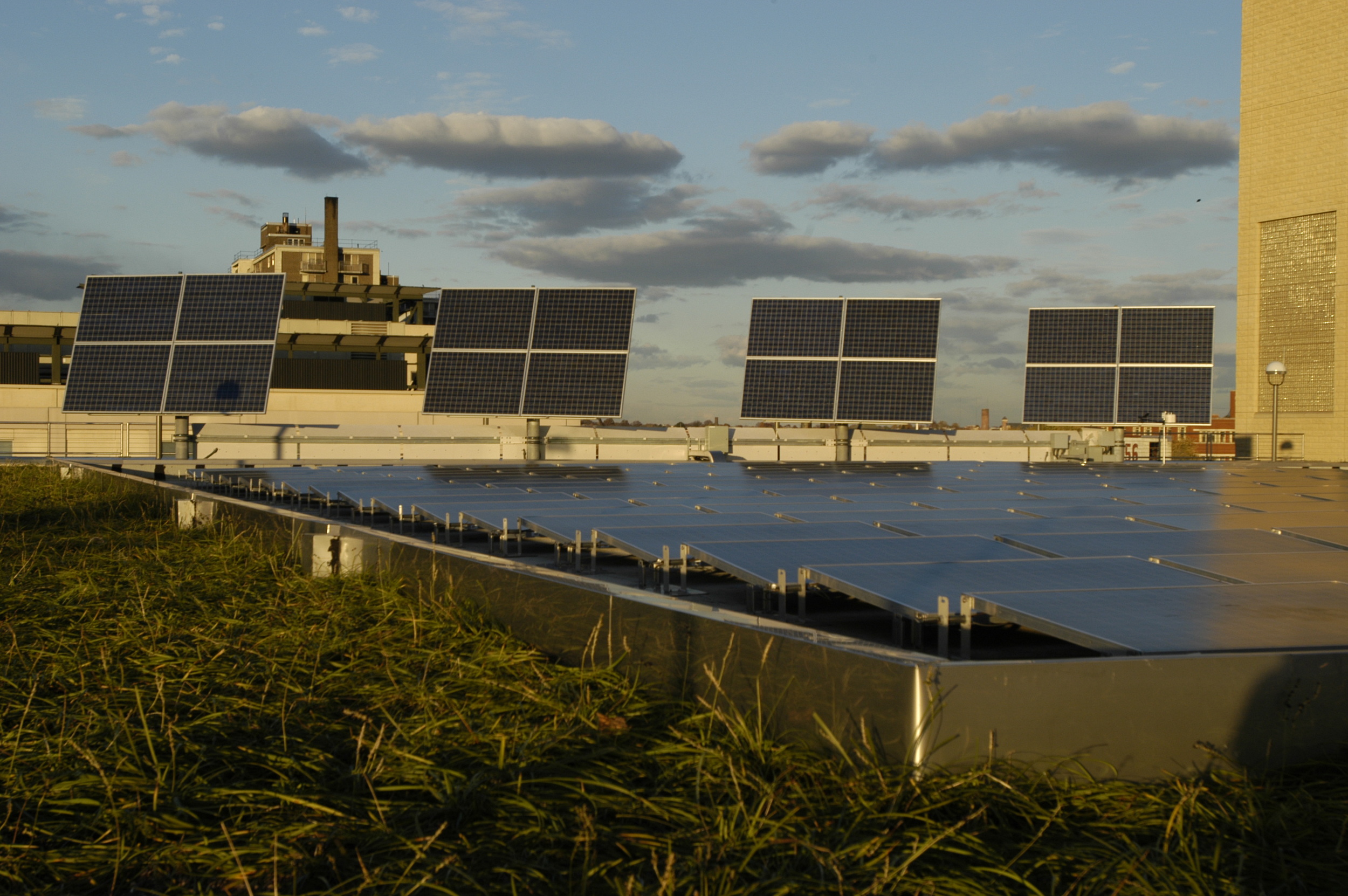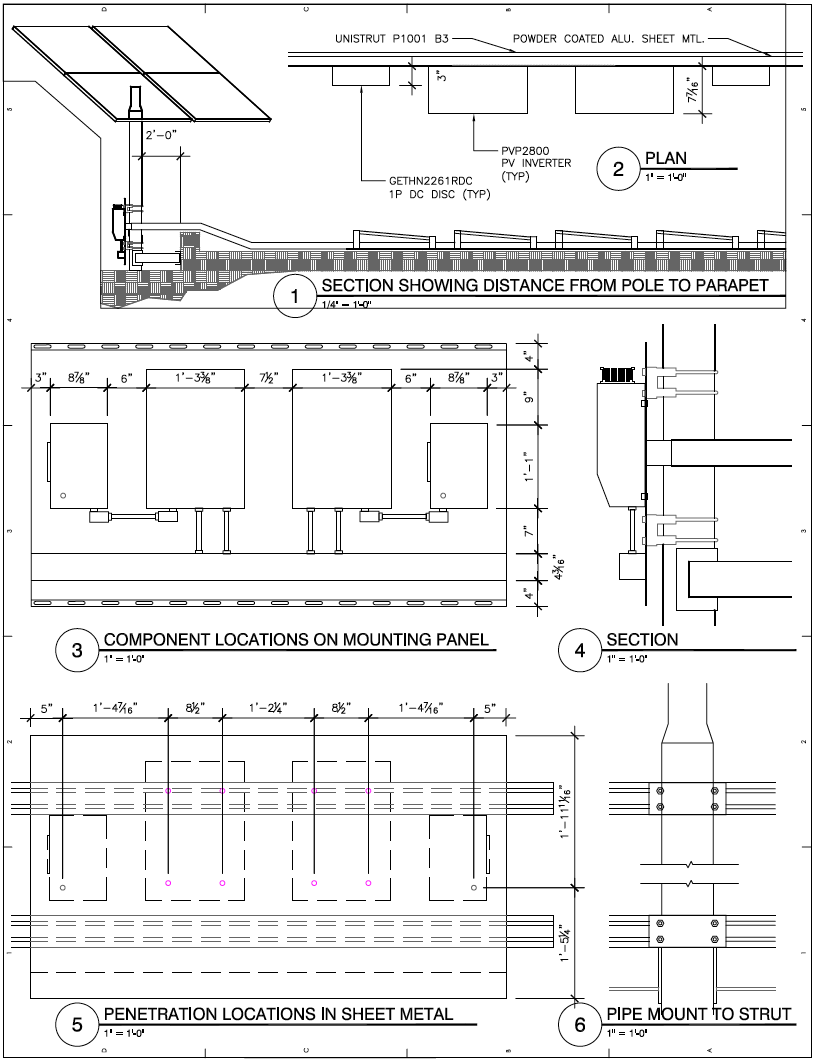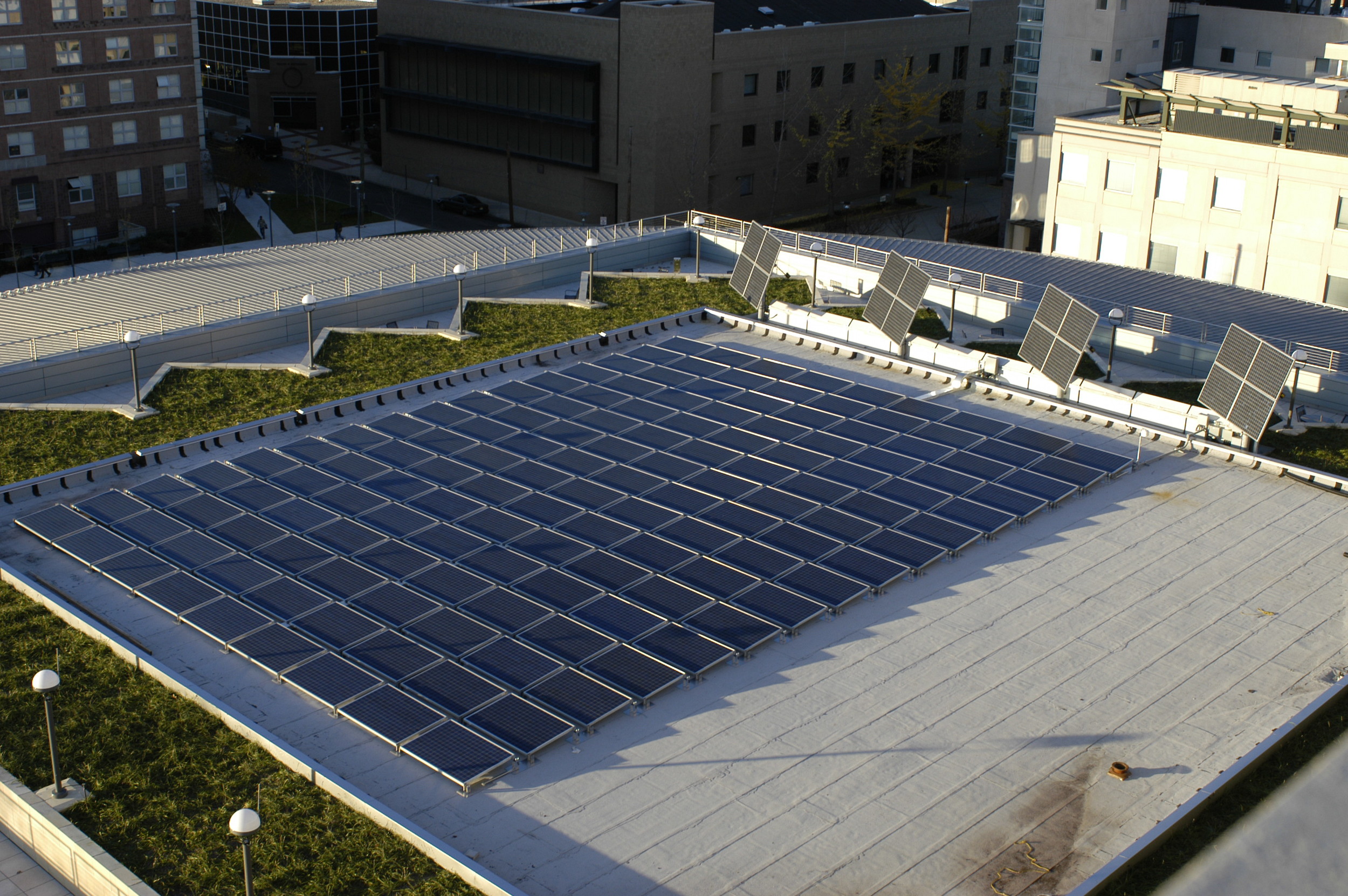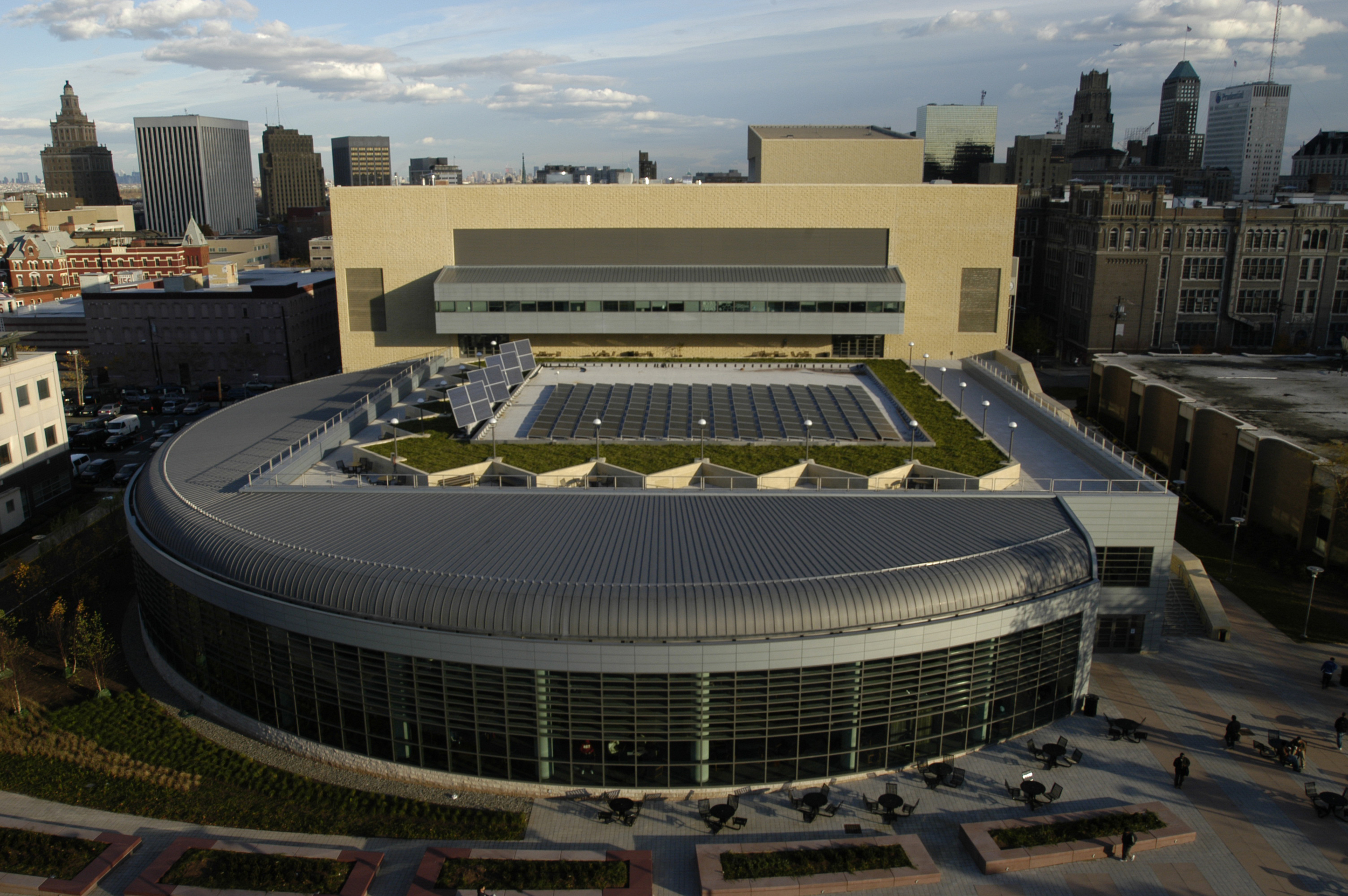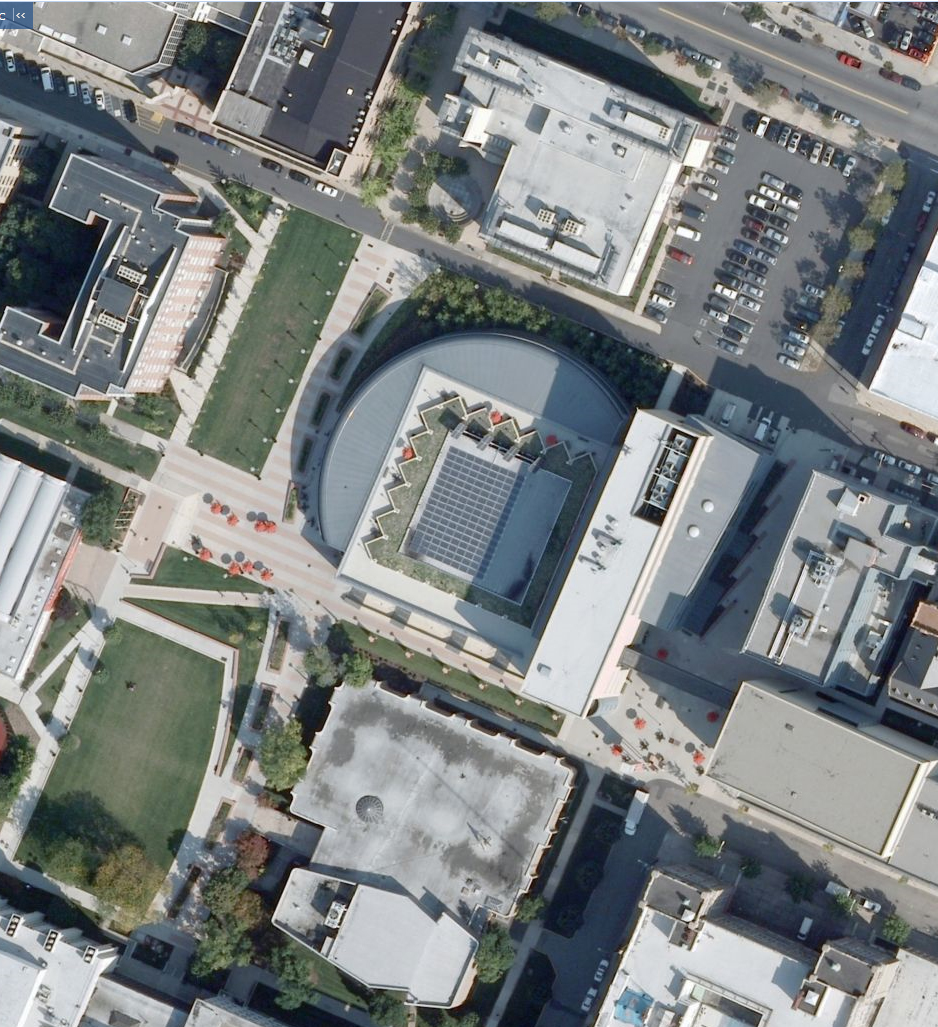50kW Solar Project for New Jersey Institute of Technology Campus Center- Schematic Design
Project Data
End-User:
Installer:
Location:
Date of install:
Size of system in kW:
Energy produced since installation
Special Challenges Met:
Project Brief:
Architecture Firm: Gwathmey Siegel Architects
Client: New Jersey Institute of Technology
Date of Construction Completion: Sept. 2005
John Millard's Role: Client Contact, Contractor Contact, Engineering Contact, Overall System Designer, Construction Administrator, Installation Trainer, Logistics of PV System Supply, Construction Finance Provider and Commissioning/ Monitoring Supervisor.
Date of Design Effort Complete: Schematic Design- November 2004, Design Development- May 2005, Construction Documentation- Jul 2005
John Millard started a company in 2003 that was a well financed solar energy integration company called TurtleEnergy, a subsidiary of Turtle & Hughes, Inc, a $300M electrical sales and marketing company that had been a family owned company for 80 years. The TurtleEnergy concept was a belly laugh to most seasoned electrical executives in 2003- the idea that solar energy might somehow find its way into the mainstream of electrical sales was considered a long shot. Despite their viewpoint, the New Jersey Solar Market would grow to a 1GW, $1B industry in less than ten years and TurtleEnergy would have a 10% market share of commercial solar electric system integration within three years of inception. By 2006, TurtleEnergy would have over 2MW of smaller commercial, grid interactive systems operational and performing as predicted. The NJIT project, a 50kW roof mounted system at the brand new NJIT Campus Center designed by Gwathmey Siegel Architects would set the pace of growth for this small solar startup.
The Architect, Gwathmey Siegel was one of the first design architects to embrace the green building revolution. The parallel ridicule that was being visited upon the architects by the construction industry as that which was being experienced by participants in the Electrical Industry. The Campus Center's "greenness" was expressed in the design by installing planters on the roof that would enable trees and ground-cover to be grown on the roof around a centerpiece of green electric generation for the building's electrical consumption- a roof mounted solar photovoltaic PV system. This idea was promoted by the campus intellectuals who pointed to the recent attacks on 9/11/2001 as evidence that the USA was in need of "energy independence" and that a trickle of that vaccine might come in the form of a small PV project to set an example for the students that their college was a forward thinker. Gwathmey Siegel embraced the project brief with an elegant response to the project by recycling the existing campus center concrete frame and enshrouding it with a circular apron enclosure that resulted in sweeping curving curtain-wall glass surfaces inside the circular residual spaces outside of the square concrete frame at the core of the design. The roof structure of this legacy concrete structure would not, as it would turn out, sustain the weight of planters deep enough to support the growth of trees on the roof- a major feature of the green roof. The solar PV System however, with its extremely high cost and sensitvity to shadows from trees functioned much more efficiently without the tree-shade crippling the production of electricity from the sun.
The rock-star solar company that was originally consulted to provide a PV System for the project was The Powerlight Corporation from California where the state had an array of incentives to promote the growth of solar at a cost of $9/Watt (a typical PV System today costs $2 - $3/W and is twice as efficient). The Powerlight Corporation was purchasing Sanyo HIT modules and mounting them on specially formed rigid insulation, large, roof tiles that interlocked together so that the solar panels that were adhered to the rigid insulation like rafts produced electricity while the rafts added thermal performance to the roof structure, theoretically reducing the heating bill in the winter and the cooling bill in the summer. NJIT was sold on this product and based the design of the buildings roof mounted PV system on Powerlight's "PowerGuard" System. Today, this product is no longer manufactured, despite the conceptual genius of it. In practice, the rigid insulation rafts that supported the solar panels became mould and algae farms on the roof that re-entrained spores into the roof mounted supply air ducts and infected the entire ventilation system of the building with "sick building syndrome". In some cases, the weep holes in the rafts became clogged and no longer drained rainwater adequately, increasing the weight of the system on the roof beyond safe tolerances and had to be removed. At the time of the project on the NJIT Campus Center, there were legal conflicts between Cornell University and the aforesaid solar rock star company over the "Powerguard" system that had been installed on Cornell University Building in Ithaca, NY.
TurtleEnergy learned of the NJIT project from the electrical contracting community who had contacted the parent company, Turtle & Hughes for pricing on some panel-boards for the solar electric system specified for the project. What began as a pricing inquiry for a $400 order turned into a $213k order for a Schott Solar FS System- a US made solar panel and mounting system that made a great deal more sense to NJIT decision-makers other stakeholders in the project. With a few short months the TE team had conveyed enough factual information about the Schott System to the NJIT project that resulted in the adoption of the Schott System as a superior solar electric system. The selling points: No mould or algae buildup, Cooler operation for the PV module, plenty of roof drainage as well as ventilation under the module. Nevertheless, the design was suffering from the fact that the specification called for 50kW and the Sanyo HIT Module that Powerlight was selling was more efficient than the Schott Solar Module. This turned out to be another bullet that the NJIT project dodged- The Sanyo HIT Module would later in 2005 be recalled due to "arc" flashing of electricity to the aluminum frame of the module. This phenomenon is mitigated by designing a larger space around the solar cells in the perimeter of the solar panel (where the aluminum frame encapsulates the eddges of the cells). Schott had a generous gap to prevent electricity from escaping from the cells onto the frame- but this additional space reduced the "efficiency" of the module which was the Watts per Square Foot of Module factor that manufacturers "pushed the envelope" of by minimizing that space. Sanyo was, at the time the most efficient solar module in the industry and consequently, bragging rights for anyone who was priviledged and fortunate enough to have a supply agreement with Sanyo. Companies that were cozy with Sanyo were the envy of the industry. At solar conferences, heads held high wearing Sanyo Tee shirts to vaunt the relationship were later an industry joke when ground faults were reported at Sanyo projects worldwide. To this day, Sanyo Modules are still some of the most efficient, but the company is now owned by Panasonic after Sanyo hemorrhaged hundreds of millions dollars (among other solar losses) due to the recall.
The NJIT design had to be improved since there was not the area on the NJIT roof to fit 50kW of Schott Solar Modules. Therefore the design evolved into a 44.9kW roof mounted design with 5kW (qty(16) 315W Modules) mounted on 2 axis trackers by Array Technologies of Albuquerque, New Mexico. These trackers would be incorporated into the structural frame of the building and become a distinctly prominent feature of the roofscape. They would also prove to enable wintertime power production that would better the 5 degree roof mounted modules by 10X. This added cost to the project that the NJIT team were happy to pay for because they wanted us to create a more overt feature that would make the solar component of the building more visible to the public. The very idea of mounting four 100 square feet of glass-encapsulated semiconductor material on 8" pipe at the top of a four stories of University Center was a risk profile that departed dramatically from TurtleEnergy's parent company's core business which was placing electrical merchandice safely in a box and placing a postage stamp and a "ship to" address on the outside of the box and sending the box to a customer by Fedex, UPS, or Best Way- for a 30% profit. Saving the earth from carbon dioxide emissions and reducing global warming were not considered high on the list of corporate mission statements. In fact, the 50kW PV System produced less than 10% of the Campus Center's electricity.
Once the contract with NJIT was secured by our customer, LB Electric, an electrical contractor, and a Minority Business Enterprise, the waiting game had begun for the demolition, construction and enclosure of the new building to be completed by the Construction Team. The Construction Manager, Turner Construction was very much engaged in understanding the structural, electrical, mechanical and civil engineering requirements of the Solar Energy System that TurtleEnergy was providing to LB Electric, and hence, to NJIT. The Turner team adopted the changes necessary to accommodate the 2 Axis Trackers by engaging the project Structural Engineer, Harrison Hamlet to design the attachments necessary to keep the trackers from blowing off the roof onto the student population below. To the surprise of all, the structural engineer solved this component with a few calculations on a pad of paper. He wrote the attachment specification into a change order and the solution was very elegant.

